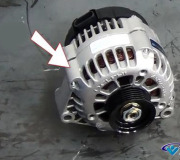Thank you for including the battery information. 11.50 volts means the battery is well beyond discharged. A good, fully-charged battery will measure very close to 12.6 volts. 12.2 volts indicates it's good, but fully discharged. It must be charged at a slow rate for a few hours, then retested.
There's a good chance the battery has a shorted cell and must be replaced, but we should start with other tests first. With such low voltage, it's a good bet a jump-start won't do the job. That is only to help a run-down battery do its job of cranking the engine. Enough current can't get through jumper cables to do the job by itself.
Use a small portable charger to charge the battery for a good three to four hours minimum. Use a low setting such as from five to ten amps. After that, turn on the head lights for five seconds to remove the "surface charge". That's the free electrons that haven't made it into the plates yet. Surface charge leads to incorrect readings.
Now, with the head lights off, measure the battery's voltage again. If it's still less than 12.2 volts, remove it for professional testing. If it's near 12.6 volts, it should start the engine. If it does, keep the engine running while you measure the battery's voltage again. Now it must be between 13.75 and 14.75 volts. If it stays near 12.6 volts or less, the charging system isn't working. I can help with that.
Here's a link to an article that explains better what you're going to be doing:
https://www.2carpros.com/articles/how-to-check-a-car-alternator
This article does a better job of showing how to charge the battery:
https://www.2carpros.com/articles/how-to-charge-your-car-battery
Please be careful that you connect the charger's red positive cable to the battery's positive post. Batteries will have a plus sign next to it, and, while it can be hard to tell, the positive post is larger in diameter compared to the negative post.
Let me know what you find up to this point.
Wednesday, December 20th, 2023 AT 7:55 PM



